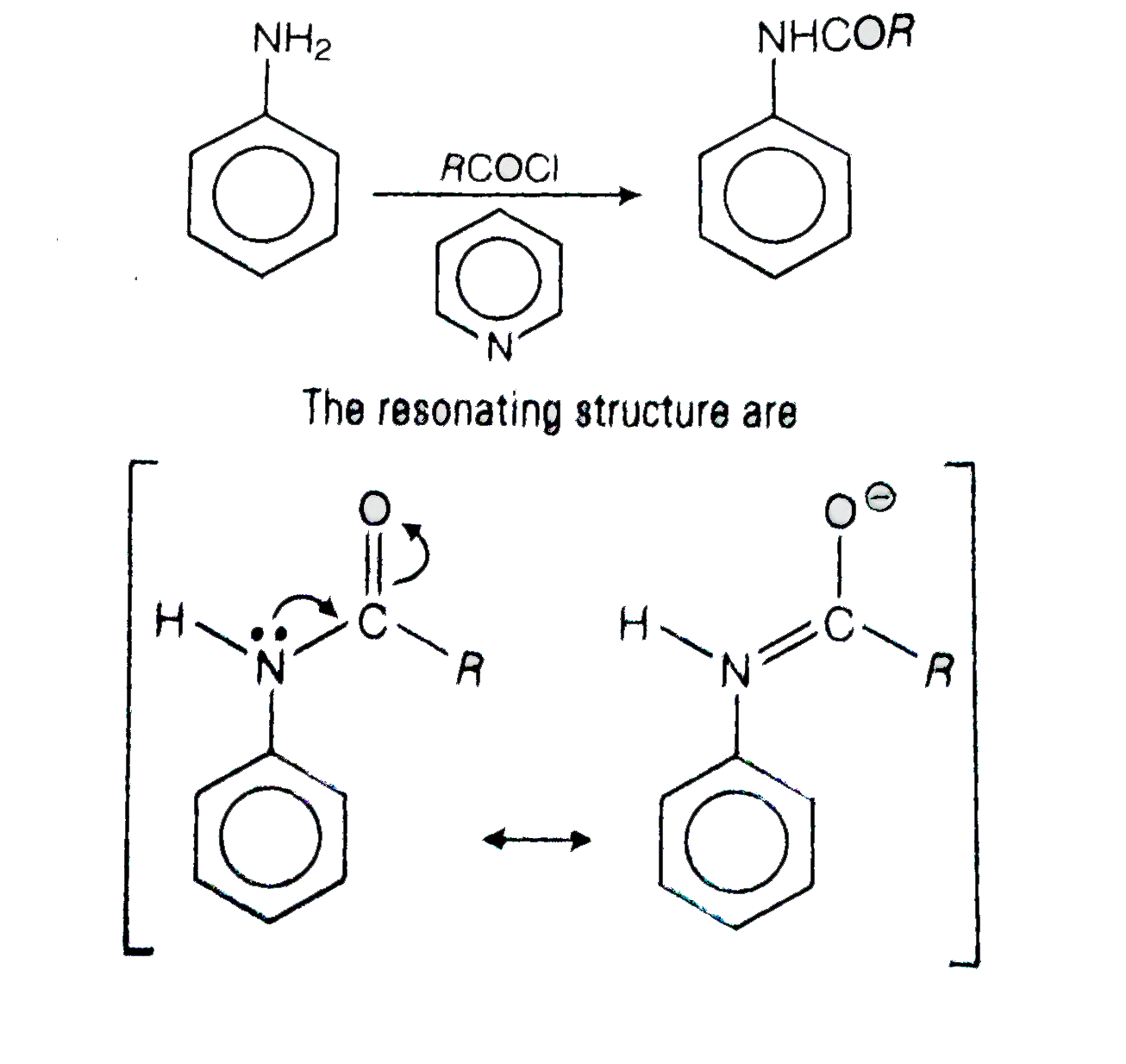Why does acylation of −NH2 of aniline reduces its activating effect?
Acrlation of −NH2 of aniline reduces its activity due to resonance of lone pair of nitrogen towards the carbonyl gorup hence o−,p− directive influence of amino group get disturbed.

Topper's Solved these Questions
- AMINESBOOK - NCERT EXEMPLAR ENGLISHCHAPTER - AMINESEXERCISE - LONG ANSWER
3 Videos
- AMINESBOOK - NCERT EXEMPLAR ENGLISHCHAPTER - AMINESEXERCISE - LONG ANSWER
3 Videos
- ALDEHYDE, KETONES AND CARBOXYLIC ACIDSBOOK - NCERT EXEMPLAR ENGLISHCHAPTER - ALDEHYDE, KETONES AND CARBOXYLIC ACIDSEXERCISE - Long Answer Type Questions
4 Videos
- BIOMOLECULES BOOK - NCERT EXEMPLAR ENGLISHCHAPTER - BIOMOLECULES EXERCISE - Long Answer Type Questions
5 Videos
Similar Questions
Give reasons for the following
(a) Acetylation of aniline reduces its activation effect.
(b) CH3NH2 is more basiic than C6H5NH2.
(c) Although −NH2 is o/p directing group, yet aniline on nitration gives a significant amount of m-nitroaniline.
View SolutionGive reasons for the following
(a) Acetylation of aniline reduces its activation effect.
(b) CH3NH2 is more basic than C6H5NH2.
(c) Although −NH2 is o/p directing group, yet aniline on nitration gives a significant amount of m-nitroaniline.
View SolutionWhy does a molecule of Ne2 fail to exist ?
View SolutionThe −NO2 group in an aromatic ring deactivates the ortho and para positions for an electrophilic attack. When −NO2 group is present at ortho or para positions of a leaving group (Nucleofuge) it activates the ring for nucleophilic attack. The reduction of −NO2 group by metal in acid causes its reduction to −NH2 group and then the ring becomes strongly activated for a electrophilic attack. The strong activation of −NH2 group is moderated by its acylation with CH3COCl to −NHAc group. Deacylation is carried out by hydrolysis with H3O+ or OH−. The ring alkylation by using RX/AlX3 is not possible in presence of −NO2 or −NH2 group but is possible in presence of −NHAc group.

The product (I) is :
View SolutionThe −NO2 group in an aromatic ring deactivates the ortho and para positions for an electrophilic attack. When −NO2 group is present at ortho or para positions of a leaving group (Nucleofuge) it activates the ring for nucleophilic attack. The reduction of −NO2 group by metal in acid causes its reduction to −NH2 group and then the ring becomes strongly activated for a electrophilic attack. The strong activation of −NH2 group is moderated by its acylation with CH3COCl to −NHAc group. Deacylation is carried out by hydrolysis with H3O+ or OH−. The ring alkylation by using RX/AlX3 is not possible in presence of −NO2 or −NH2 group but is possible in presence of −NHAc group.

The product (G) is :
View SolutionThe −NO2 group in an aromatic ring deactivates the ortho and para positions for an electrophilic attack. When −NO2 group is present at ortho or para positions of a leaving group (Nucleofuge) it activates the ring for nucleophilic attack. The reduction of −NO2 group by metal in acid causes its reduction to −NH2 group and then the ring becomes strongly activated for a electrophilic attack. The strong activation of −NH2 group is moderated by its acylation with CH3COCl to −NHAc group. Deacylation is carried out by hydrolysis with H3O+ or OH−. The ring alkylation by using RX/AlX3 is not possible in presence of −NO2 or −NH2 group but is possible in presence of −NHAc group.

The product (H) is :
View Solution−NH2 group is a strong activator towards aromatic electrophilic substiution reaction. Activating capability of −NH2 group can be reduced by treating with
View SolutionIn acidic medium Zn reduces nitrate ion ot NH+4 ion according to the reaction Zn+NO−3(unbalanced)→Zn2++NH+4+H2O
How many moles of HCl are required to reduce half a mole of NaNO3 completely? Assume the availability of sufficient Zn.
View SolutionWhy is NH2 group of aniline acetylated before carrying our nitration
View SolutionWhich of the following side chain reaction/s can be used to reduce the acitivating group such as (−OH) or (−NH2).
View Solution
